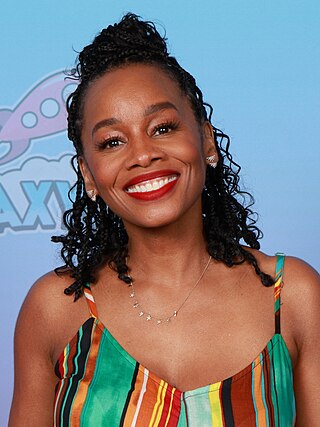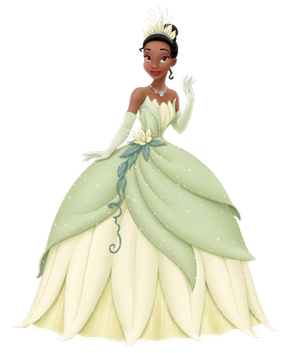
Song of the South is a 1946 American live-action/animated musical comedy-drama film directed by Harve Foster and Wilfred Jackson, produced by Walt Disney, and released by RKO Radio Pictures. It is based on the Uncle Remus stories as adapted by Joel Chandler Harris, stars James Baskett in his final film role, and features the voices of Johnny Lee, Baskett, and Nick Stewart. The film takes place in the U.S. state of Georgia during the Reconstruction era, a period of American history after the end of the American Civil War and the abolition of slavery. The story follows seven-year-old Johnny who is visiting his grandmother's plantation for an extended stay. Johnny befriends Uncle Remus (Baskett), an elderly worker on the plantation, and takes joy in hearing his tales about the adventures of Br'er Rabbit (Lee), Br'er Fox, and Br'er Bear. Johnny learns from the stories how to cope with the challenges he is experiencing while living on the plantation.

John Alan Lasseter is an American film director, producer, and animator. He has served as the head of animation at Skydance Animation since 2019. Previously, he acted as the chief creative officer of Pixar Animation Studios, Walt Disney Animation Studios, and Disneytoon Studios, as well as the Principal Creative Advisor for Walt Disney Imagineering.

Walt Disney Animation Studios (WDAS), sometimes shortened to Disney Animation, is an American animation studio that creates animated features and short films for The Walt Disney Company. The studio's current production logo features a scene from its first synchronized sound cartoon, Steamboat Willie (1928). Founded on October 16, 1923, by brothers Walt Disney and Roy O. Disney after the closure of Laugh-O-Gram Studio, it is the longest-running animation studio in the world. It is currently organized as a division of Walt Disney Studios and is headquartered at the Roy E. Disney Animation Building at the Walt Disney Studios lot in Burbank, California. Since its foundation, the studio has produced 62 feature films, from Snow White and the Seven Dwarfs (1937) to Wish (2023), and hundreds of short films.

Splash Mountain is a log flume ride at Tokyo Disneyland. It was formerly located at Disneyland and Magic Kingdom. The attraction is based on the animated sequences of Disney's 1946 film Song of the South. The ride experience begins with an outdoor float-through that leads to indoor dark ride segments, with a climactic steep drop followed by an indoor finale. The drop is 52.5 feet.

Critter Country is one of the lands at Disneyland Park and Tokyo Disneyland. It originally opened as Bear Country at Disneyland Park in 1972, with the Country Bear Jamboree (1972–2001) as its centerpiece. In 1988 it was renamed Critter Country, and will be renamed Bayou Country in November 2024 to coincide with the opening of Tiana's Bayou Adventure.
Bruce Wayne Smith is an American film and television producer, animator, character designer and film director. He is best known as the creator of Disney Channel's The Proud Family (2001–2005) and Disney+'s The Proud Family: Louder and Prouder (2021–present). Employed by Walt Disney Animation Studios since 1996, Smith has served as the supervising animator for Kerchak and Baboons & Baby Baboon in Tarzan, Pacha in The Emperor's New Groove, Dr. Facilier in The Princess and the Frog and Piglet, Kanga and Roo in Winnie the Pooh. He directed the 1992 animated film Bebe's Kids, which was met with critical and commercial failure.

Bruno Campos is a Brazilian lawyer and former actor. He is known for roles including Diego Vasquez on the sitcom Jesse, Dr. Quentin Costa on the award-winning television series Nip/Tuck, the voice of Prince Naveen in the animated film The Princess and the Frog, and Massimo in the Academy Award-nominated Brazilian film O Quatrilho. In 2010, Campos attended law school, earning a J.D. in 2013, and works for the firm Covington & Burling.

Disney Princess, also called the Princess Line, is a media franchise and toy line owned by the Walt Disney Company. Created by Disney Consumer Products chairman Andy Mooney, the franchise features a lineup of female protagonists who have appeared in various Disney franchises.

Anika Noni Rose is an American actress. She is best known for voicing Tiana, Disney's first African-American princess, in The Princess and the Frog (2009). She was named a Disney Legend in 2011.

Ronald Francis Clements is an American animator, film director, screenwriter, and film producer. He often collaborates with fellow director John Musker and is best known for writing and directing the Disney animated films The Great Mouse Detective (1986), The Little Mermaid (1989), Aladdin (1992), Hercules (1997), Treasure Planet (2002), The Princess and the Frog (2009), and Moana (2016).

John Edward Musker is an American animator, film director, screenwriter, and film producer. He often collaborates with fellow director Ron Clements and is best known for writing and directing the Disney animated films The Great Mouse Detective (1986), The Little Mermaid (1989), Aladdin (1992), Hercules (1997), Treasure Planet (2002), The Princess and the Frog (2009), and Moana (2016).

Randy Cartwright is an American animator.

Tony Wayne Baxter is the former senior vice president of creative development in Walt Disney Imagineering and was responsible for creating designs and carrying out the construction of attractions all over the world. He announced his departure from his full-time position to become a part-time adviser on February 1, 2013. During his 47-year tenure with the company, he oversaw the construction of multiple contemporary Disney theme park attractions, including Big Thunder Mountain Railroad, Star Tours, Splash Mountain, The Indiana Jones Adventure, and Journey Into Imagination, and served as the executive producer of Disneyland Paris.

Tiana Rogers is a fictional character in Walt Disney Pictures' animated film The Princess and the Frog (2009). Created by writers and directors Ron Clements and John Musker and animated by Mark Henn, Tiana is voiced by Anika Noni Rose, with Elizabeth M. Dampier voicing the character as a child. She will appear in the Disney+ series Tiana.

Mark Alan Henn is an American animator and film director. His work includes animated characters for Walt Disney Animation Studios films, most notably leading or titular characters and heroines. He served as the lead animator for Ariel in The Little Mermaid (1989), Belle in Beauty and the Beast (1991), Jasmine in Aladdin (1992), Young Simba in The Lion King (1994), the title character in Mulan (1998), and Tiana in The Princess and the Frog (2009). Since all these characters except Simba became Disney Princesses, he came to be known as the "princess guy" around the studio. He directed the short films John Henry (2000) and D.I.Y. Duck (2024). Henn spent a total of 43 years at Walt Disney Animation Studios, from 1980 until his retirement in 2023.
"Friends on the Other Side" is a song from the 2009 animated film The Princess and the Frog. It was written by Randy Newman and is sung by Keith David, the voice of the film's villain, Doctor Facilier. It depicts Facilier beginning his plan to take over New Orleans by first deceiving Prince Naveen while at the same time getting his valet, Lawrence, to become his ally. This song is reprised later in the film when he fails his voodoo spirit accomplices, a.k.a. the 'Friends on the Other Side' of the bargain deal, and he, along with his shadow, are being dragged into the voodoo spirit world.
"Down in New Orleans" is a song from Disney's 2009 animated film The Princess and the Frog, written by Randy Newman. Several versions of the song were recorded for use in different parts of the film and other materials. The song was nominated for Best Original Song at the 82nd Academy Awards, but lost to "The Weary Kind" from Crazy Heart.
"Almost There" is a song written by Randy Newman for Walt Disney Pictures' animated film The Princess and the Frog (2009). It was originally recorded by actress and singer Anika Noni Rose in her film role as Tiana. The song was nominated for Best Original Song at the 82nd Academy Awards, but lost to "The Weary Kind" from Crazy Heart. "Down in New Orleans", another song from the film, performed by Dr. John, was also nominated for the Oscar.
"When We're Human" is a song from the 2009 Disney animated feature film The Princess and the Frog. It is performed by Louis, Tiana and Naveen [as frogs], when they are sailing down a river and fantasizing about what they will do when they become human. It was composed by Randy Newman and co-orchestrated by Jonathan Sacks, and features Michael-Leon Wooley, Bruno Campos and Anika Noni Rose. It "is in the style of jazz", while having " a Mardi Gras party sound". The trumpet solos are performed by Terence Blanchard on behalf of his horn-blowing animated alter ego Louis the Alligator.

Tiana's Bayou Adventure is a log flume attraction at Magic Kingdom and upcoming at Disneyland. It is based on Disney's 2009 film The Princess and the Frog. The ride experience begins with an outdoor float-through that leads to indoor dark ride segments, with a climactic steep drop followed by an indoor finale. The drop is 52.5 feet. The attraction replaced Splash Mountain and opened on June 28, 2024 at Magic Kingdom and is scheduled to open on November 15, 2024 at Disneyland.



















